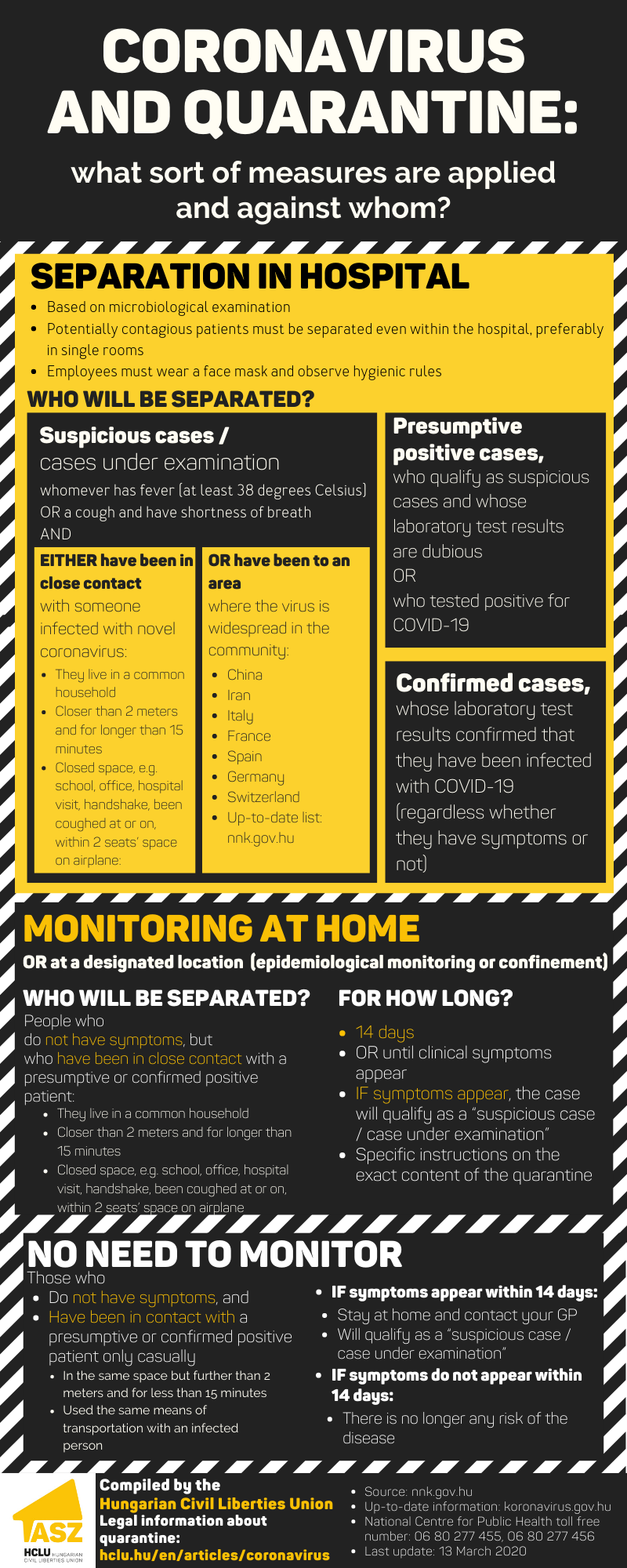Coronavirus and quarantine: What sort of measures are applied and against whom?
Author: Társaság a Szabadságjogokért
Created at: 2020. March 16, Monday
Modified at: 2020. June 30, Tuesday
The National Centre of Public Health issued a comprehensive protocol at the beginning of the coronavirus outbreak in Hungary. We made an infographic with the most important details.

